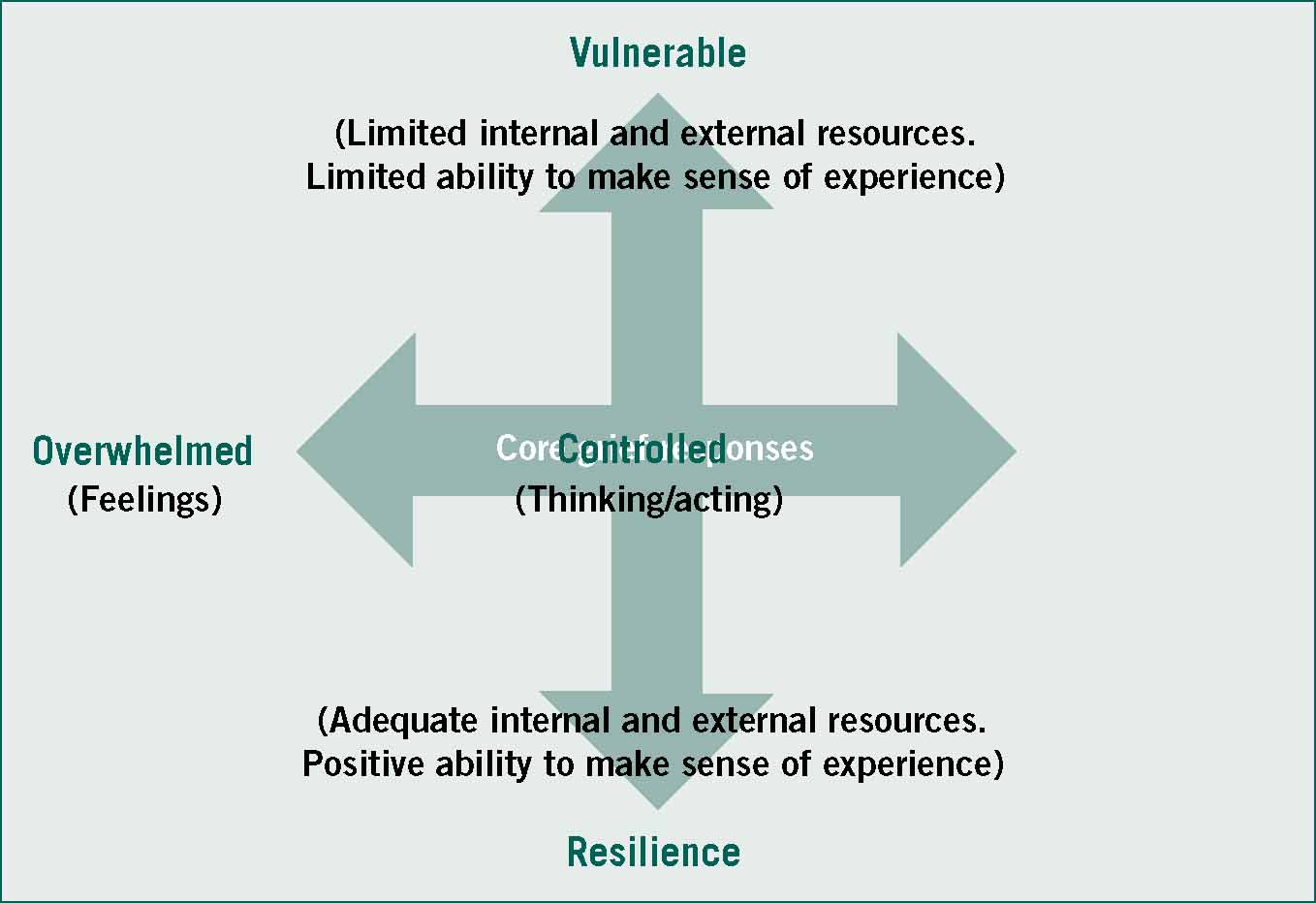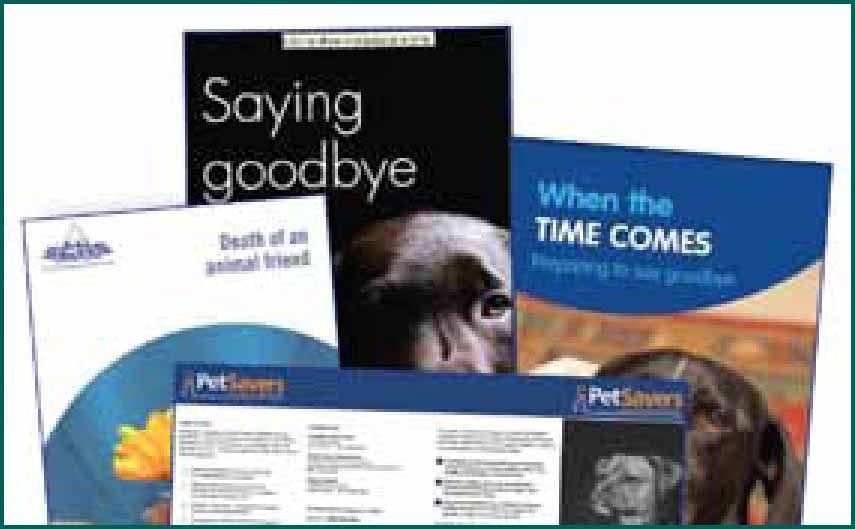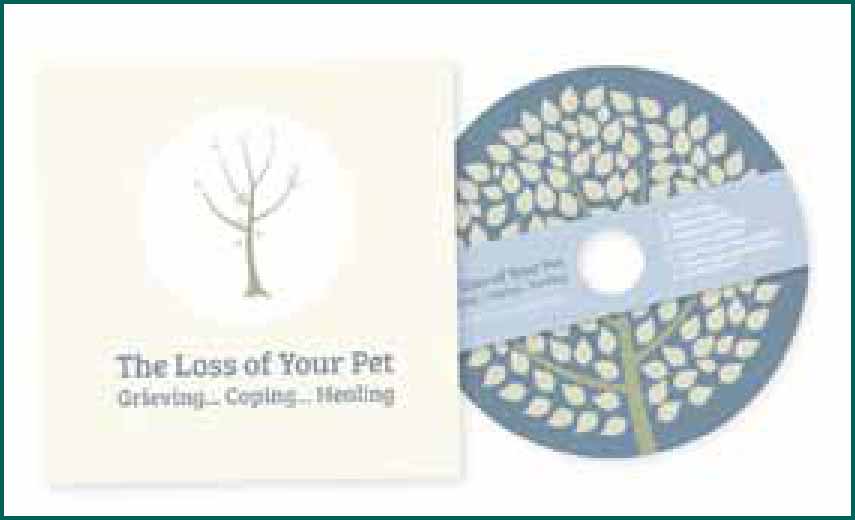To the author's knowledge, the benefits of a comprehensive strategy on client support during animals’ end-of-life phase are not recognised by most veterinary practices. For example, clients’ receipt of information about grief and support is often not routine but depends on the judgement of the veterinarian, nurse or receptionist concerned. Practices that have an inconsistent or incomplete approach are likely to lose money and to fail some of their clients:
- Up to 10% of bereaved clients may not return to their practice, even though they were satisfied with euthanasia (Fernandez-Mehler et al, 2013). In practices without a client-care policy, this attrition probably arises in part because some bereaved clients associate the clinic and personnel with a sense of profound loss, not resolution and healing.
- At a conservative estimate, the attrition of bereaved clients and related indirect attrition will represent cumulative turnover losses totalling £55 000 to £67 000 per small animal veterinarian, between 2014 and 2016 (Hewson, in press).
- While most bereaved clients do not change practices, many suffer deep distress when their animal companions die. Canadian researchers studied 177 owners during the first 2 weeks after their animals had been euthanased or had died (Adams et al, 2000). Thirty percent of those participants experienced ‘severe grief’, identified by measures such as emotional and physical consequences. That grief typically lasted for 6 weeks before diminishing over variable periods. Research on UK owners is needed, but anecdotal evidence suggests that a similar proportion may suffer likewise. This paper highlights:
- Some recent research relevant to grief for pets
- Evidence-based approaches to bridging the grief support gap with clients.
Introduction to grief
Grief is the term for the behavioural, social, psychological and emotional reactions that a person has in response to the ending of a significant relationship (Casarett et al, 2001). It is a spontaneous and normal response that enables people to adapt to life without that individual. Owners experience it when their animals die because they are attached to their animals (Adams et al, 1999; Sable, 2013). That is, as with human relationships, the relationship with the animal provides feelings of comfort and security, and other benefits, which are lost when the animal dies.
The experiences of grieving for a pet and a human have many similarities (Adams et al, 1999; La Jeunesse, 2012). In neither case is there a tidy unidirectional sequence of feelings, or stages. Instead, grieving is widely understood as a process of inner ‘work’ to accept the loss and adapt to life without the loved one (La Jeunesse, 2012). It is accompanied by feelings such as numbness and anger, which may recur until adaptation has occurred (La Jeunesse, 2012).
Grieving need not necessarily be directed towards detaching from the dead companion (Stroebe et al, 2005). In a study of 33 middle-class, American pet owners, many found it comforting and adaptive to experience a continuing bond with the deceased pet, e.g. through dreams and photographs (Packman et al, 2012).
Anticipatory grief
When an owner learns of the need for euthanasia, they may start grieving even though the animal is still alive (Shanan, 2011). This anticipatory grief is well described in the face of human death (Casarett et al, 2001). It may lead some clients to withhold consent for what the veterinarian judges to be timely euthanasia, because grief may make the recommendation seem unreal. The client may then resent the veterinarian for persisting in the recommendation or, as found with 6% of respondents in Adams et al (2000), feel rushed into consenting to euthanasia. Such experiences can leave clients with strong feelings of guilt for having consented to euthanasia (Adams et al, 2000).
Complicated grief
After a human bereavement, most people adapt without the need for expert intervention (Stroebe et al, 2005; Nagraj and Barclay, 2011). While representative data are lacking on bereaved animal owners, it seems probable that most can adapt likewise. However, some may experience complicated grief, i.e. persistent distress, maladaptive coping behaviours and adverse health reactions (Casarett et al, 2001). It is not clear how common this is in UK pet owners. A survey of 106 pet owners at a first opinion clinic in Hawaii suggested a prevalence of 5% to 12% in that population (Adrian et al, 2009). This is consistent with the 10% prevalence reported after human bereavement (McCallum and Byrant, 2013).
Factors affecting grief
Grief is shaped by personal and demographic factors, styles of response to loss, and situational factors.
Personal and demographic factors include age, gender, health status, attachment style, care-giving style and social support (Chur-Hansen, 2010; Zilcha-Mano et al, 2011; Packman et al, 2012). The roles and interactions of these elements are complex and some remain unclear.
Research is lacking on styles of response to loss among pet owners. However, the Range of Response to Loss model (Machin, 2010; Relf et al, 2010) seems a strong candidate model for pet owners’ grief (Figure 1). There, the grief response is primarily either over-whelmed (the person is focused on their feelings) or controlled (the person is focused on acting normally and keeping feelings in check). People who can balance these two sides of their response are said to be resilient. They would progress normally through their grief, making good use of appropriate support resources. Those who cannot achieve such balance are said to be vulnerable and might benefit from more particular support and follow up.

Situational factors include the circumstances of the animal's death, e.g. euthanasia rather than natural death; and how the veterinarian broke bad news (Adams et al, 2000; Shaw and Lagoni, 2007; Lagoni and Durrance, 2011; Morris 2012). Sudden, unexpected or painful death (Chur-Hansen 2010; Watters et al, 2013) may make grief more severe for clients, e.g. when animals die from pulmonary thrombo-embolism or in road accidents.
Pet owners’ grief may also be affected by four particular difficulties, described below.
Lack of societal support
Grief for pets is termed ‘disenfranchised’ because it cannot be acknowledged freely (Chur-Hansen, 2010). Society sets expectations of how people behave and, although particular sources of social support are available (e.g. online fora, counselling, helplines), there is no collective societal recognition and support for expressions of grief for animals (Adams et al, 1999; Chur-Hansen, 2010; Morris, 2012; Burne-Jones, 2013). Reasons for this may include:
- The general silence around human bereavement and grief
- Lack of societal agreement about the value of animal life (Fraser, 2008)
- Although there is nothing recent or atypical about people having close attachments to animals (Charles, 2014), there is a tendency ‘to construct the human/animal bond as something that is only of value to humans who are in some way marginalized, and supposedly deficient in human contact’ (Morley and Fook, 2005). Thus, a grieving owner may be judged as in some way abnormal.
All these societal attitudes can make it difficult for clients to express and move through grief for their animals.
Guilt following euthanasia
Empirical and research data (Adams et al, 2000; Morris, 2012) suggest that some 50% of owners who have had their animals euthanased, feel guilt for this. Contributory factors may include:
- How the veterinarian broke the bad news and helped the owner reach an informed decision for euthanasia (Shaw and Lagoni, 2007)
- The owner having contributed, however unintentionally, to the circumstances resulting in euthanasia
- Doubt over whether euthanasia was the right decision taken at the right time for the animal (Adams et al, 2000).
Animal as link to other significant relationships or experiences
Animals can be a link to a deceased or absent family member, or may have helped their owner recover from a human bereavement. The animal's death may therefore trigger added or unresolved grief for that deceased person (Chur Hansen, 2010; Morris, 2012; Charles, 2014). It may also trigger grief from other painful events, e.g. childhood sexual abuse may increase a bereaved pet owner's risk of complicated grief (Taylor and Breen, 2013).
Frequency of bereavement
The commonest companion animal species have much shorter lifespans than humans. For many animal owners, this means experiencing bereavement more frequently than is the case with human loved ones.
The above four factors may magnify a bereaved pet owner's grief, making it seem to others like an over reaction. They may then react with trivialising remarks, e.g. ‘It was only a hamster’; ‘Just get another one’ (Morley and Fook, 2005; Burne-Jones, 2013). Such remarks can cause the owner further distress, and a significant minority may take time off work to avoid that risk (Burne-Jones, 2013).
Bridging the support gap
Education about grief and how to communicate with bereaved clients has not been part of veterinary professional training until relatively recently. Personnel may therefore over rely on experience and intuition and make false assumptions about clients’ grief support needs, as can also happen among medical professionals (National Institute for Clinical Excellence, 2004; Chur-Hansen, 2010; Relf et al, 2010). However, assumptions should not be made (Chur-Hansen, 2010). For example, Carmack (1985) found pet loss was disruptive to families, but often all the family members who may be affected by an animal's death are not seen. Thus it is important always to offer verbal and written guidance to every bereaved client at the outset, in case there are other household members who might benefit from the information.
Moreover, while evidence is lacking for the most effective forms of grief support for pet owners, offering basic guidance can empower the bereaved to find the support that's right for them. Such guidance should ‘signpost’ clients through their grief, emphasise its normality and validity, and provide an extensive list of diverse further resources. That approach is in line with recommendations to medical personnel following human bereavement (National Institute for Clinical Excellence, 2004).
Some veterinary practices emphasise helplines and counselling. There is good anecdotal evidence that some clients finds those helpful. However, a critical analysis of human bereavement research found no evidence that ‘emotional disclosure facilitates adjustment to loss in normal bereavement’ (Stroebe et al, 2005: 395). Thus, while talking may help bereaved clients feel supported, it may not make any difference to the course or outcome of their grief — assuming their grief is uncomplicated. Possible reasons for this lack of effect are (Stroebe et al, 2005):
- Nothing can restore the dead pet
- Time may be the only solution to that loneliness
- Depending on the client and the type of counselling, the client may not move beyond repetitive negative thoughts about their loss. Thus they may not gain insights or learn strategies that might help their grief to pass more easily.
A further consideration is that bereaved clients who have a controlled response to loss may be especially unlikely to want to discuss their grief but may welcome information about self-help resources (Relf et al, 2010).
The above critique is not to dismiss the use of helplines and counselling for bereaved pet owners, but to illustrate possible limitations.
Developing an effective practice strategy
Anecdotal evidence suggests that the role of providing particular support to grieving clients often falls to veterinary nurses, who may request or be sent for training in grief support. However, effective support for clients is a team effort because grief may be affected by the verbal and non-verbal communication of the receptionist, veterinary nurse and veterinarian. All need training, therefore, if a practice is to have an effective and evidence-based strategy for supporting bereaved clients. Such a strategy would include many simple but practical points, which could be audited. An example is:
- Boxes of tissues are made available in each of the different client areas (consulting room, waiting room, reception desk). This is because not providing tissues can imply that your practice does not consider it normal or acceptable to cry in response to bad news or the death of a pet. That non-verbal message can make grief harder for some clients to cope with (Adams et al, 2000).
Team training in how to approach grief is essential for a practice strategy to be effective. The training would be interactive and experiential, not lectures because, as proved by Latham and Morris (2007), guided experiential learning is the only way that personnel can develop their communication and support skills to a level that makes a difference for clients (Silverman et al, 2004).
Anecdotal evidence suggests that the most common support offered to clients currently is in the form of leaflets about the Pet Bereavement Support Service or grief generally, produced by animal charities (Figure 2). A new addition has been The Loss of Your Pet client-care packs, which include a CD and comprehensive list of further support resources (Figure 3) (Hewson, 2013). Very little team training is available currently, although webinars and distance learning courses about pet loss support are available for individual learning. However, some pet crematoria provide in-practice training; Belinda Johnston MRCVS (Our Special Friends; www.ourspecialfriends.com); and The Loss of Your Pet resource also provides evidence-based team training (Hewson, 2013).


Conclusion
Pet owners’ grief is a normal reaction to the ending of a close attachment. Their grief may be complex and, generally, it receives little societal understanding. While most bereaved owners can adapt to life without their animal companion, many suffer unnecessarily in the process. Robust evidence is lacking for the most effective approaches to pet loss support. A pragmatic approach would include using staff training to optimise client communication and other aspects of client care, and offering all clients information about grief and support resources.
Empirical evidence is that demand for team training is relatively low in the UK, and clients’ receipt of information about grief and support is not routine. However, because training in grief support is now part of the veterinary nursing curriculum, nurses are well-placed to help their practices develop evidence-based strategies of care for bereaved clients, to the benefit of clients and practices.
Key Points
- Pet owners’ grief is affected by personal and situational factors and has little collective societal understanding.
- While most bereaved owners can adapt to life without their animal companion, many suffer unnecessarily and some are at risk of complicated grief.
- Evidence is lacking for how best to assess pet owners’ grief support needs, and on the most effective approaches to pet loss support.
- A pragmatic approach would include staff training and extended client-care resources, to normalise grief for pets and ensure that all newly bereaved owners have information about diverse types of support.


